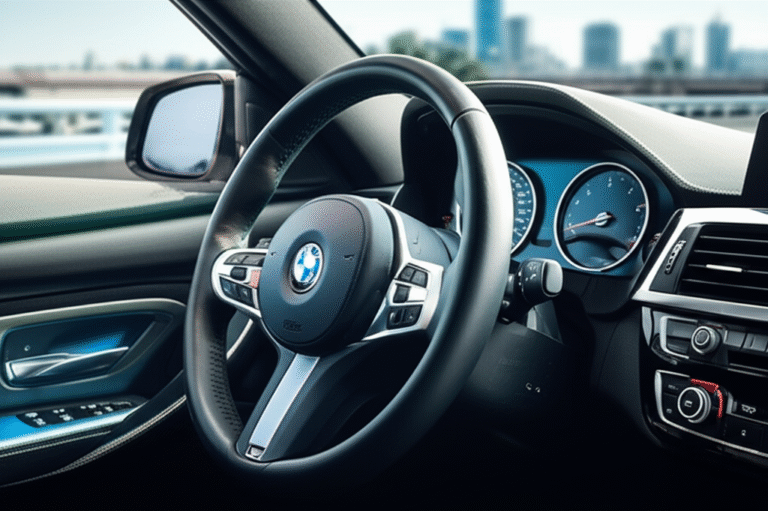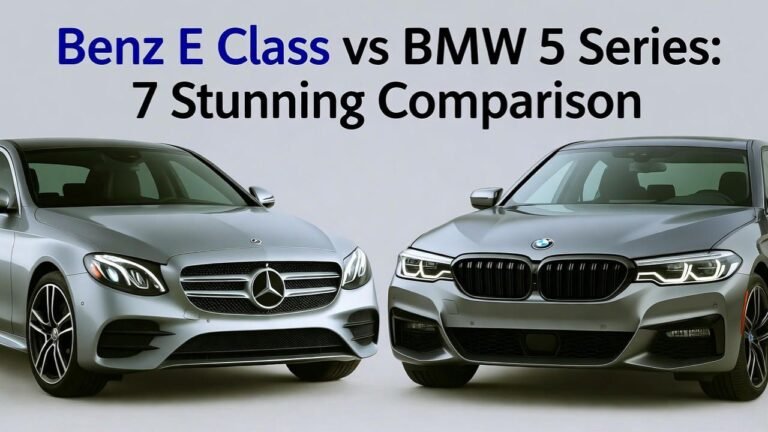BMW X6 Old Model: 8 Surprising Facts
BMW X6 Old Model: 8 Surprising Facts You Should See
The BMW X6 pioneered a new class of vehicle, blending SUV utility with coupe styling. If you’re curious about these “Sports Activity Coupes,” especially the older models, you’ve come to the right place. Owning or considering one means you’re interested in unique automotive engineering. This guide will unveil eight surprising facts about the BMW X6 old model, making it easy to understand its legacy and appeal. Let’s explore what makes this vehicle stand out.
Key Takeaways
- Discover the X6’s “coupe-SUV” birth.
- Learn about its influential design evolution.
- Understand early performance and luxury features.
- Explore its impact on the automotive market.
- Uncover surprising maintenance insights for older models.
- See why it remains a distinctive choice today.
What is the BMW X6 Old Model?
When we talk about the “BMW X6 old model,” we’re generally referring to the first two generations of this distinctive vehicle. The first generation, the E71, was produced from 2008 to 2014. The second generation, the F16, followed from 2015 to 2019. These models are what many people picture when they think of the original “Sports Activity Coupe” or SAC, a term BMW coined to define this unique automotive blend. It’s a vehicle that challenged traditional SUV norms with its sloping roofline and sporty demeanor, setting a trend that many other manufacturers have since followed. Understanding the “old model” helps appreciate how far the X6 has come and what made it a pioneer.
1. The Birth of the “Sports Activity Coupe”
The most surprising fact about the BMW X6 old model is that it essentially created a new vehicle category: the Sports Activity Coupe (SAC). Before the X6 arrived in 2008, the automotive world was accustomed to SUVs with boxy, utilitarian shapes. BMW recognized a desire for a vehicle that combined the higher driving position and practicality of an SUV with the sleek, sporty aesthetics of a coupe. The X6 was their bold answer. It featured a dramatically sloped roofline that flowed into the rear, giving it a dynamic silhouette unlike any SUV before it. This innovative design was a gamble, but it paid off, influencing the design of many other vehicles in the years that followed.
2. A Design That Defined a Segment
The design of the BMW X6 old model was revolutionary, and it’s a key reason it stands out. While some criticized its radical styling when it first debuted, its influence is undeniable. The E71 generation (2008-2014) boasted a muscular stance, a prominent grille, and that iconic fastback roofline. It blurred the lines between a sports car and an SUV, offering a visual statement that turned heads. The F16 generation (2015-2019) evolved this design, refining the lines and making it look even more integrated, but the core DNA of the coupe-SUV remained. This distinct visual identity is a major draw for buyers who want something different from the typical SUV.
Here’s a quick look at how the design evolved across the first two generations:
| Generation | Model Code | Production Years | Key Design Elements |
|---|---|---|---|
| First Generation | E71 | 2008–2014 | Aggressive stance, prominent grille, hallmark sloping roofline, sporty rear end. |
| Second Generation | F16 | 2015–2019 | Refined body lines, more integrated roofline, updated front and rear styling, still retaining the SAC profile. |
3. Performance Prowess Beyond the Surface
While the striking design is often the first thing people notice, the BMW X6 old model hid significant performance capabilities. BMW is renowned for its driving dynamics, and the X6 was no exception. Even the base models offered robust engines, often twin-turbocharged inline-six or V8 powerplants, delivering ample acceleration for its size. Higher trims, like the X6 M, were performance powerhouses, engineered for exhilarating speed and handling that rivaled many sports cars. Features like BMW’s xDrive all-wheel-drive system provided excellent traction and stability, making it capable in various conditions. This blend of power and sophisticated all-wheel drive was a hallmark of the X6, offering drivers a thrilling yet secure experience.
4. Luxury and Technology Ahead of Its Time
For an “old model,” the BMW X6 was surprisingly packed with luxury and technology. BMW consistently equipped its vehicles with premium materials and advanced features, and the X6 was a flagship for this. Early models offered leather upholstery, sophisticated infotainment systems (for their era), advanced climate control, and a host of driver assistance features that were groundbreaking at the time. Even by today’s standards, the interior of an older X6 can feel quite upscale and well-appointed. Features like iDrive infotainment, heated and ventilated seats, premium sound systems, and advanced navigation were often available, showcasing BMW’s commitment to a luxurious driving experience.
5. The X6 Influenced Competitors Heavily
The undeniable success of the BMW X6 old model spurred a wave of competition. Manufacturers saw the demand for vehicles that offered a blend of SUV utility and coupe-like styling and began developing their own interpretations. Soon, models like the Mercedes-Benz GLE Coupe and the Audi Q8 emerged, directly challenging the X6’s dominance in the niche it created. This ripple effect is a testament to how innovative and influential the X6 was. It proved that consumers were ready for vehicles that broke the mold and offered more than just traditional designs. This is a significant part of its legacy in the automotive industry.
6. Practicality Suffers for Style
Here’s a surprising, yet understandable, fact about the X6 old model: its stylish, sloping roofline comes at a cost to practicality compared to a traditional SUV. While it still offers decent cargo space and passenger room, the steeply raked rear window and reduced rear headroom mean it’s not as practical as its more conventional SUV counterparts, like the BMW X5. For instance, fitting bulky items or accommodating very tall passengers in the rear can be more challenging. This is a deliberate trade-off for the coupe-like aesthetics that define the X6. For those prioritizing sportiness and a unique look over maximum utility, this is a compromise worth making, but it’s crucial to be aware of it when considering an older model.
7. Early Models Can Be Maintenance-Intensive
As with any luxury vehicle, especially those with advanced engineering like the BMW X6 old model, maintenance can be a significant consideration. Older models, particularly those with higher mileage, may require more attention and potentially more costly repairs. BMW vehicles are known for their sophisticated engines and complex electronics, which can be expensive to fix if something goes wrong. Routine maintenance, like oil changes, brake services, and fluid flushes, is essential. Beyond that, specific common issues for older X6 models might include turbocharger problems, transmission issues, or wear and tear on suspension components. It’s always wise to have a pre-purchase inspection done by a qualified BMW mechanic for any used X6. Understanding potential maintenance costs upfront is key for any owner or prospective buyer. Researching common issues for specific model years can be very helpful.
Here’s a simplified look at common maintenance areas for older BMW X6 models:
- Engine: Regular oil changes, spark plug replacements, and monitoring for turbocharger health are vital.
- Transmission: Fluid changes are crucial for longevity. Some models might experience transmission control module issues.
- Suspension: Wear on bushings, struts, and air suspension components (if equipped) is common with age and mileage.
- Brakes: Standard wear items, but replacement can be costly due to the size and technology involved.
- Electronics: Infotainment systems, sensors, and control modules can sometimes develop faults.
8. Still a Bold Statement Today
Even with newer generations on the market, the BMW X6 old model remains a bold statement. Driving one today still signifies a preference for distinctive style and performance over conventional norms. Its unique silhouette continues to stand out in parking lots and on the road. For buyers looking for a used luxury SUV with a flair for the dramatic, an older X6 can be a compelling option, often available at a more accessible price point than newer models. It represents a specific era of automotive design innovation that continues to resonate with enthusiasts who appreciate its pioneering spirit and undeniable road presence.
Pro Tip:
When considering a BMW X6 old model, always factor in the cost of specialized maintenance. Many independent European car specialists can be more affordable than dealerships for routine work and common repairs.
BMW X6 Old Model: Frequently Asked Questions
What are the main differences between the first and second-generation BMW X6 old models?
The first generation (E71) is known for its more aggressive styling, while the second generation (F16) offers refined lines, improved interior technology, and more efficient engines. The F16 generation also typically has a more advanced infotainment system and updated driver assistance features.
Are older BMW X6 models reliable?
Reliability can vary by model year and how well the vehicle has been maintained. BMWs, in general, are well-engineered, but older, high-performance luxury vehicles can require more diligent maintenance. It’s crucial to get a pre-purchase inspection and understand the maintenance history.
What are common issues to look for in a used BMW X6 old model?
Common concerns can include potential turbocharger issues, transmission problems, worn suspension components (especially air suspension if equipped), and occasional electronic glitches. Regular maintenance and addressing minor issues promptly can prevent larger problems.
Is the BMW X6 old model fuel-efficient?
Fuel efficiency is not typically a strong suit for high-performance luxury SUVs, and older X6 models are no exception. Engine sizes and performance tuning mean they generally consume more fuel than more conventional SUVs. However, some later models within the “old model” range, particularly those with inline-six engines, offer relatively better MPG compared to V8 variants.
How does the BMW X6 old model compare to the BMW X5 old model?
The X5 is a more traditional SUV with greater cargo space and more headroom, especially in the rear. The X6 is its coupe-styled sibling, prioritizing sportier aesthetics and a more dynamic profile over maximum practicality. Performance can be similar depending on the engine and trim levels chosen.
What is the typical lifespan of a BMW X6 old model?
With proper and consistent maintenance, a BMW X6 old model can last for well over 150,000 miles. However, the cost of maintenance and repairs will increase as the vehicle ages and accumulates mileage. Key components like the engine and transmission are robust but require diligent care.
What are the performance differences between X6 models and their X5 counterparts?
In comparable trim levels, the X6 often offers a slightly sportier suspension tuning and the same powerful engine options as the X5. The X6’s design is geared more towards on-road performance and handling, while the X5 might offer a marginally more comfortable ride for everyday use. The X6 M variants are exceptionally high-performance versions.
Conclusion
The BMW X6 old model is more than just a vehicle; it’s a statement of automotive innovation. From creating the Sports Activity Coupe segment to its enduring design and performance, the X6 has left an indelible mark on the automotive landscape. While its stylish silhouette prioritizes form over ultimate function in some areas and requires diligent maintenance, it remains a captivating choice for those who seek a blend of luxury, sportiness, and a unique presence on the road. Understanding these eight surprising facts about the BMW X6 old model can help you appreciate its legacy and make a more informed decision if you’re considering one.


